Posted by Watch Warehouse Experts on Jul 27, 2018
Manual Vs. Automatic Luxury Watches
What makes a luxury watch a luxury watch? For some luxury watches, the value is visible from the outside: they are made with precious materials and are jewelry-like in their quality. Some luxury watches contain most of their value on the inside. The mechanical watches on our site are all excellent examples of this latter category.
If you’re looking to buy a luxury watch, you will have to answer the question “Which kind of movement is right for me?” Each kind of movement is unique in subtle but significant ways. Read this post comparing luxury automatic and manual watches to explore their pros, cons, and inner workings.
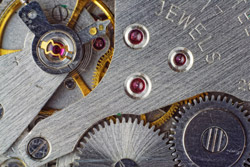
What Types Of Watch Movements Exist?
Since their emergence in the 17th century, wrist watches have undergone a stylistic and technological transformation. The most significant transformation has been in the movement, or caliber, which is the source of all movement in the watch. In recent years, quartz movements have become the norm. Mechanical movements, however, were the first available type of movement and therefore encompass the result of centuries of research and refinement. Their engineering is more complex and intricate than quartz watches, making them a better representation of traditional watch technology. Later in this article, we will be comparing the two types of mechanical watches: luxury manual vs. automatic watches.
The difference between mechanical and quartz movements is in their power source. Quartz movements use batteries. Mechanical movements require some human help to keep working. Though mechanical watches tend to be slightly less accurate than quartz watches, watch enthusiasts generally prefer them.
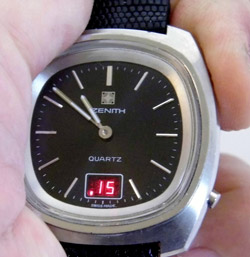
Celebrate Fine Craftsmanship With A Luxury Manual Or Automatic Watch
Before we compare manual vs. automatic watches, let’s take a look at the benefits of owning a mechanical watch. Because they are slightly less accurate than quartz models, their appeal is not in their accuracy. For a simple explanation of their appeal, compare the interiors of these watch types: notice how the intricate appearance of mechanical movements contrasts with the more industrial, mass-produced look of quartz movements. Quartz watches are an impressive feat of modern technology, but they lose some of the magic of mechanical watches. Luxury manual and automatic watches are not only a fashion accessory – they are a celebration of technology that you can wear on your wrist.
Manual Movements
For the first two decades of wristwatch creation, manual movements were the only watches available on the market. They rose to widespread use during the First World War after proving instrumental in several fighting tactics. The history of watchmaking is inseparable from the history of the military, athletics, and exploration.
How They Work
Luxury manual and automatic watches use similar movements. Manual watches are also known as hand-wound watches because they require daily winding. A series of tiny interior components cause the dials to move. The skill-intensive art and technique of horology are dedicated to the engineering of these parts.
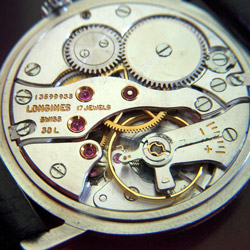
To set the watch in motion, the user must turn the crown to wind and store energy in the mainspring. That energy activates the complex interior mechanism of the watch, all of which works to turn the dials. Users must take care not to over-wind the manual watch and must remove the watch before winding it. Manual watches are a high-maintenance watch style and the most traditional of all movement styles. They are generally found in classic, vintage, or collectible models. Between manual vs. automatic watches, manual watches are usually the more expensive option.
Automatic Movements
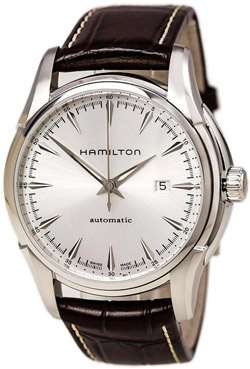
In 1923, John Harwood introduced a self-winding watch system, marking the invention of the automatic watch. Luxury automatic watches function similarly to mechanical watches, but they have additional components that make them less dependent on winding. Automatic movements get their energy from the movement of the wearer’ wrist. A rotating metal weight (rotor) is attached to the movement. When the wearer moves their wrist, the rotor winds the mainspring. As a result, the more you wear your watch, the more energy it will store. You only need to wind an automatic luxury watch every 1-2 weeks if you wear it daily. If you wear it less frequently, you will need to wind it every two or three days to keep it well-oiled and functioning.
Which One Is Right For Me?
When shopping for a wristwatch, you can choose between quartz, automatic, and manual movements. Whether you are looking for a watch to wear or to collect, each type has pros and cons that should influence your decision. A quartz watch is exceptional for practical timekeeping but is generally not an exciting or sophisticated collector’s item. A manual watch is delicate and high-maintenance, but your efforts will be rewarded with the pleasure of owning a great, classic piece of technology. A luxury automatic watch combines the best of both worlds, making it a popular choice for everyday wear. So when does a manual watch win the manual vs. automatic watch debate? Many sought-after collectors’ watches are manual watches. They are the most classic of watch movements.
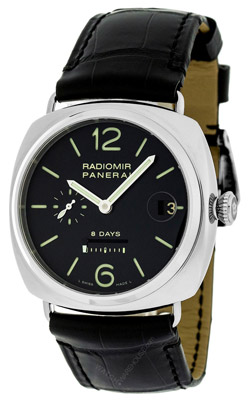
What Brands Are Best?
Different watch brands have mastered different types of movements. Which brands should you browse if you’re looking for a manual or automatic watch? To find the perfect automatic watch, begin your search with luxury watch brands Seiko (which also created the world’s first quartz watch) and Hamilton. For great manual watches, view the legendary Omega Speedmaster or a sporty Panerai watch.
Shop Discounted Manual and Automatic Watches
Watch Warehouse is dedicated to helping you find the right luxury automatic or manual watches for you. With the information in this article, we hope that you are well-equipped to choose between an automatic and manual watch. As a company specializing in luxury timepieces, Watch Warehouse is excited to bring you breathtaking pieces at a much lower price than you’ll typically see. Shop our watches using the links above or type “manual” or “automatic” into the search bar to begin your search.